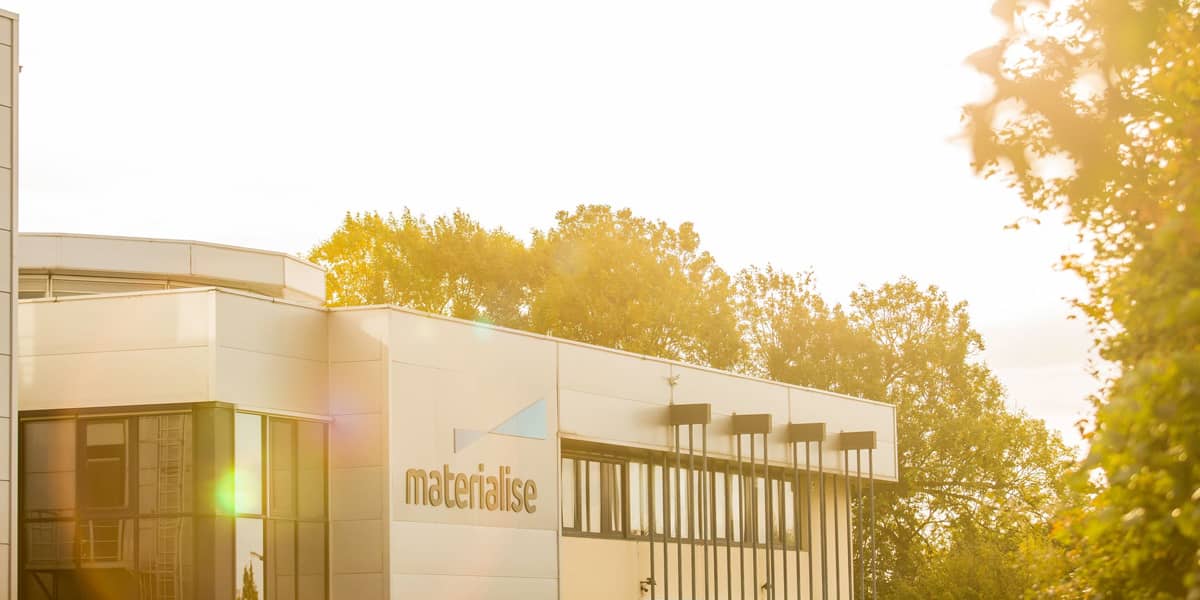MANUFACTURING
Manufacturing Megatrends:
Why the ‘New Normal’ Might Look Quite Familiar
Bart Van der Schueren, Chief Technology Officer and Materialise Mindware representative, discusses megatrends in manufacturing and how these values can guide companies navigating the industry during a pandemic.

Manufacturing has entered unchartered territory. Whatever the product you make or sector you serve. COVID-19 has triggered a health and economic crisis of such magnitude that we simply have no equivalent scenarios with which to compare.
A post-pandemic map does not exist; an easy-to-follow step-by-step guide to help reach a desired destination has not been written for this eventuality. Coupled with the only known — that further changes are inevitable, yet, highly unpredictable — it may well seem that navigating a clear route forward is a virtually impossible task.
But the truth is, there are landmarks that can help manufacturers plot that journey more accurately. COVID-19 hasn’t obscured them. In fact, it has made them all-the-more prominent.
A number of ‘megatrends’ that were driving decision making pre-pandemic are more relevant now than ever. Some of them may be familiar from the ways they influence the trends in AM we predict for 2021. And those megatrends are something that management teams can turn to their advantage. Especially with 3D printing solutions in their survival kit.
Stick with sustainability
Sustainable production. Last year that meant improving the environmental credentials of products and parts by making the manufacturing processes and supply chains behind them leaner and greener. Reducing wastage in every sense, from minimizing production scrap to eliminating energy waste by simplifying supply chains and optimizing transportation of goods.
It still does. Only now, with a key difference. Sustainability has become an incredibly practical business survival tactic. For instance, where sourcing products locally may once have been a customer-driven development, now — in a world where supply routes can be suddenly shut down — it makes smart business sense.
This is one of the reasons why I believe we will see heightened interest in the use of 3D-printed ‘digital spares’. Key parts that were once shipped in and stored as physical assets will be replaced by AM files that can be kept, adjusted, and printed as necessary to meet evolving customer needs and demands. No storage costs. No risk of part discontinuation or supply chain barrier and breakdowns. Just reliable replacements.
![]()
Sustainability has become an incredibly practical business survival tactic.
The pandemic has also shone a brighter (energy efficient) light on sustainability in general. The drop in global CO² levels driven by reduced road and air travel has prompted a greater emphasis on making all forms of transportation better for the planet. Demand for parts and products that are lighter, leaner, and greener in this sector — in fact, across all sectors — is only growing.
Again, this ideally suits an additive manufacturing strategy. By virtue of the design freedom it facilitates, 3D printing allows products to be re-imagined with reduced weight, fewer individual components, and often with less requirement for additional finishing processes. Reducing the number of parts, processes, and amount of weight to move equals less energy and fewer resources consumed. Great for keeping production costs down but also for meeting customer demand for sustainable credentials.
Supercharging health and safety
Staff health and safety has always been a priority for manufacturers. During the pandemic, it’s fair to say that this has also been a significant challenge. Introducing social distancing and a wide range of COVID-associated protocols on top of standard measures to ensure worker wellbeing has been a tough task. But one the industry has risen to.
Nobody knows what the legacy of this period will be on manufacturing exactly, but I think this keen focus on health and safety is a very safe bet. Why? Because people power production. And with many workforces reduced or operating with adjusted shift patterns to minimize contact between colleagues, taking every precaution to ensure staff safety is key.

3D-printed parts are lightweight and ergonomic, helping to reduce worker fatigue or injury.
Harnessing the design freedom and rapid adaptability of 3D printing to custom-create jigs, fittings, and tools helps improve repeatability, consolidate processes, and enable productions to quickly adjust to accommodate changing product demands.
What’s often less recognized, or seen as secondary advantages, are the health and safety benefits. In creating manufacturing tools that are lighter, reduce the number of processes required, and have ergonomics designed into their DNA, they become easier and more accurate to use. Yes, this has production quality benefits but crucially it also reduces the risk of worker fatigue and potential injury due to excessive lifting or awkward maneuvering. As we move into 2021, these are advantages that cannot be overlooked. And I have a feeling they won’t be.
Digitalization won’t disappear
Industry 4.0 and the rise of digitalization has been one of the most dominant themes in manufacturing in recent history, primarily due to the significant efficiency gains on the table. Post-COVID, these potential efficiency gains can help manufacturers take important steps towards improving productivity and profitability. As a result, digitalization is here to stay at the top of priority ladders.
But digitalization also has much more to offer in terms of helping manufacturers seize new or rapidly evolving opportunities. And whether what’s needed is a small change or a much more significant shift in strategy, additive manufacturing is here to help.

Digital spare parts enabled by AM reduce supply chain risks.
De-risking production and cutting costs
Let’s quickly reiterate my earlier point about digital spares here. There are inevitably tools and components that need to be replaced more often than others due to their function and associated wear. Switching to a model of 3D-printed digital spares in such cases avoids the supply chain risk and minimizes storage costs. It can also significantly limit damaging downtime. Small digital change, big business value.
Minimizing time-to-market, maximizing ROI
The digital-first nature of AM means that the time taken to advance from concept stage to low volume runs for acceptance testing can be dramatically shortened for more responsive production. Rapid-iteration design, encompassing immediate market feedback and customer collaboration, then allows for cost-effective fine-tuning to establish a “known sellable” that won’t require costly retrospective changes further down the line.
Short run strategy, simplified
What if you are not launching to market? What if you are a long-standing supplier of parts and products to established sectors?
For the foreseeable future some of the biggest opportunities, even in major sectors such as automotive or aerospace, are going to lie in the development and supply of crucial components on a much smaller scale. This is a post-COVID inevitability as sectors navigate through the uncertainty ahead.
As a digitally based manufacturing technique, 3D printing makes a short-run strategy more cost-effective, and also offers the potential for rapid production adjustments and/or diversification to better meet the needs of a wider range of customers.
Evolution not revolution
I started this post by saying that a post-pandemic map does not exist because we don’t know exactly where we are heading. We do know, however, that the ‘new normal’ in manufacturing is firmly focused on the ‘here and now’. Because it has to be. There’s no other choice.
That doesn’t require a revolution. Because revolutionary change is, by and large, focused on achieving a specific end goal. Instead what’s needed are guidance points manufacturers can keep sight of, and tools which support evolution at pace with the world around us. Thankfully, these are ingredients to success that are also available in the here and now.
Contact Materialise Mindware Advisors
Speak with our team to discover how we can help you
carve your competitive edge using additive manufacturing.



